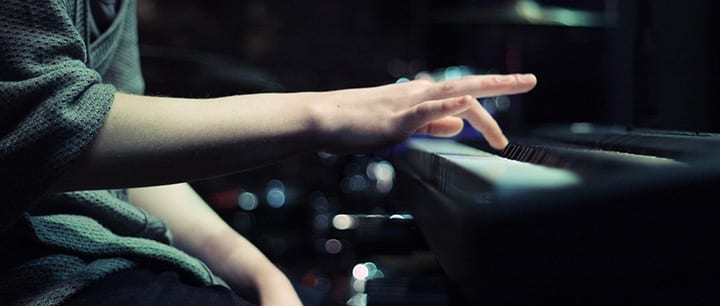Want to try playing piano by ear? Follow these four simple steps from Newport Beach, CA teacher Patricia S. and you’ll be playing your favorite songs in no time…
If you’ve ever wanted to be able to play the piano by ear, then this is the blog post for you! In just four easy steps, you’ll be able to start playing your favorite songs on the piano without any sheet music.
Ready to get started? Let’s go!
Is Playing the Piano By Ear a Gift?
How do you play the piano by ear – and can anyone do it? Yes! Here are a few tips:
- Start by listening to music. A lot of it. Pay attention to the melodies and rhythms and try to identify the patterns.
- Once you have a feel for how music works, start trying to play simple songs by ear. Start with nursery rhymes or children’s songs that you know well.
- As you get better, challenge yourself with more complex pieces. Don’t be afraid to make mistakes – that’s how we learn.
- Don’t forget to practice, practice, practice! The more you play, the better you’ll get at hearing and playing music by ear.
There’s no question that playing the piano is a talent. But is it a gift? Can only certain people do it? The answer is no. While some people may be born with a natural affinity for music, that doesn’t mean they’re the only ones who can learn to play an instrument.
Taking lessons can really help you advance as a piano player, especially when it comes to playing piano by ear. Sign up and now and consider all the other benefits of taking piano lessons, too, like what you see in the video below:
https://www.youtube.com/watch?v=2wQ1ZXph1HI
Is Playing Piano By Ear Hard?
When it comes to learning piano, there are two main approaches: learning to read sheet music, or “playing by ear.” While both methods have their advantages, playing by ear can be seen as the more difficult of the two.
After all, reading music is a skill that can be learned relatively easily, while it can take years to develop a good ear for music. That said, playing by ear is also a highly rewarding experience, allowing pianists to connect with the music on a deeper level. In addition, many of the world’s greatest pianists began their musical journey by playing by ear.
So while it may be hard, playing piano by ear is definitely worth the effort.
How to Play Piano By Ear: Tips for Success
Ear training doesn’t need to be difficult or boring. You can have fun, learn techniques for playing piano by ear, and learn a little bit about music theory all at once! And you need to know very little about the piano to do it.
To start, find a song with a good melody, and one that isn’t too fast. Pick a slow song or ballad. It’s best if you have some kind of a media player, like an iPod, iPad, or even YouTube handy, to play the song while you are working. You’ll need to know how to stop the track you are listening to and rewind sections of it. Oh! And, of course, have some kind of a keyboard or piano to play on.
Don’t worry if you’ve never had a piano lesson. If you have two hands and at least four fingers you can do this.
Step 1: Learn to Play Piano by Ear By Listening to the Song
Listen a LOT to the melody of the song. Then, listen only to a small section. As you listen, poke around on the keys to find notes that sound like they belong in the tune. Enjoy the process of discovering your song. Don’t forget the black keys! The melodies to most songs fall right in the middle of the keyboard. That’s a good place to start hunting. Be sure to listen in small sections, or you might become frustrated. Finding the notes in a song, alone, is an excellent way to start training your ear.
Step 2: To Play Piano By Ear, Start With Your Right Hand
With your right hand, play your song without listening to your media player. Uh-oh! Which fingers do you use? While learning to use efficient fingering is a skill to be learned later, we aren’t too concerned about that right now. Here’s a tip: place your hand so that the lowest notes in your song – those toward the left side of the keyboard as you face it – are closer to your thumb. Reserve the higher notes – those toward the right side of the keyboard – for your pinky finger. If most of the notes go much lower, or much higher, adjust the position of your hand accordingly. Or, you can just play through your melody with one finger for now.
Step 3: Time to Introduce Some Music Theory
Now we get to the music theory part. To harmonize your song, or add body and fullness beneath the melody, play chords with your left hand. You will play these with your thumb, your middle finger and your pinky.
The notes in the chord need to be evenly spaced. Look at your keyboard — we’ll build a chord starting from the note “C” to get you started. Find a patch with two black keys – not three black keys. The “C” is the white key just barely to the left of the two black keys. To help you find “C” there is another white key to the left of it. Place your pinky on “C” and keep it there. Skip a white key and put your middle finger on the next white key. Skip one more white key and put your thumb on the next white key. Now, play all three notes at once. You have played a C Major chord!
Most songs can be harmonized with major and minor chords. Look at the C chord you just played. Including black keys, notice the number of keys between the notes you are playing. In a major chord, there are three other keys between your pinky and your middle finger, and there are two other keys between your middle finger and your thumb. That configuration makes a major chord. If you change the shape of the chord, so that you have only two other keys between your thumb and middle finger and three between your middle finger and thumb, you will make a minor chord. Try it. Play the “C.” Skip only two keys of any color. You will be playing a black key with your middle finger. Then, skip three keys. With your thumb you should be playing the same note you played in your major chord. Now, play them all at once. You have played a minor chord.
Step 4: Play the Melody and Add Some Chords
Play your melody and add some chords with your left hand. Experiment with lots of major and minor chords to see which ones fit.
How Long Does it Take to Learn Playing Piano By Ear?
So how long does it take to play piano by ear?
Though it may look daunting at first glance, the piano is actually quite easy to learn how to play.
And, for those with an ear for music, it can be learned relatively quickly by ear. How long it takes to learn playing piano by ear will depend on the individual and how much time they are willing to commit to practice.
However, most people can learn the basics within a few weeks. Those who want to become more skilled players may need to dedicate several months or even years to practice.
But, for those who simply want to enjoy making music, the piano can be learned relatively quickly and easily. By taking the time to practice and master a few simple techniques, anyone can enjoy making beautiful music on the piano.
Can Anyone Learn to Play Piano By Ear?
The ability to play piano by ear is often seen as a talent that only some people are born with. However, there is evidence that suggests that anyone can learn to play piano by ear with the right instruction.
The results suggest that anyone can learn to play piano by ear if they receive the proper instruction and practice regularly.
With this in mind, it seems that anyone who is interested in learning to play piano by ear should not be discouraged – with some dedication and effort, it may be possible to develop this skill.
What Does it Mean if You Can Play Piano By Ear?
If you can play piano by ear, it means that you have the ability to hear a piece of music and then reproduce it on the piano without the need for sheet music or other written notation. This skill is often associated with perfect pitch, which is the ability to identify or re-create a musical note without any reference tone.
People who have perfect pitch are typically able to play piano by ear with ease, as they can simply “hear” the correct notes in their head and then play them on the instrument. However, it is also possible to develop this skill even if you don’t have perfect pitch.
By listening carefully to a piece of music and practicing regularly, you can train your ear to pick out the individual notes and replicate them on the piano. With time and practice, playing by ear can become second nature.
Don’t worry if you aren’t 100% successful at playing piano by ear at first. Keep at it. You’ll be learning, whether or not you work out your song completely. Try playing the melody to a familiar nursery song like “Twinkle, Twinkle, Little Star” to start. It might be easier to find chords for a simpler song.
Remember to have fun with your experiment. Piano should be fun. And it doesn’t hurt to exercise our minds with a little bit of music theory.
In just four easy steps, you can be playing the piano by ear. You don’t need any prior experience or musical knowledge- we promise! Just follow these simple tips and before you know it, you’ll be impressing your friends and family with your new skill. Ready to get started?
Sign up for our online piano lessons today and we’ll show you how it’s done. See you in the virtual classroom!
 Patricia S. teaches piano, singing, music performance,and more in Newport Beach, CA. Patricia S. has taught voice for Orange County School of the Arts (OCSA), Gold Coast Theatre Conservatory, Crestmont Conservatory of Music, and the California State University Dominguez Hills Music Conservatory. Learn more about Patricia here!
Patricia S. teaches piano, singing, music performance,and more in Newport Beach, CA. Patricia S. has taught voice for Orange County School of the Arts (OCSA), Gold Coast Theatre Conservatory, Crestmont Conservatory of Music, and the California State University Dominguez Hills Music Conservatory. Learn more about Patricia here!
Photo by gagilas
Suzy S.


